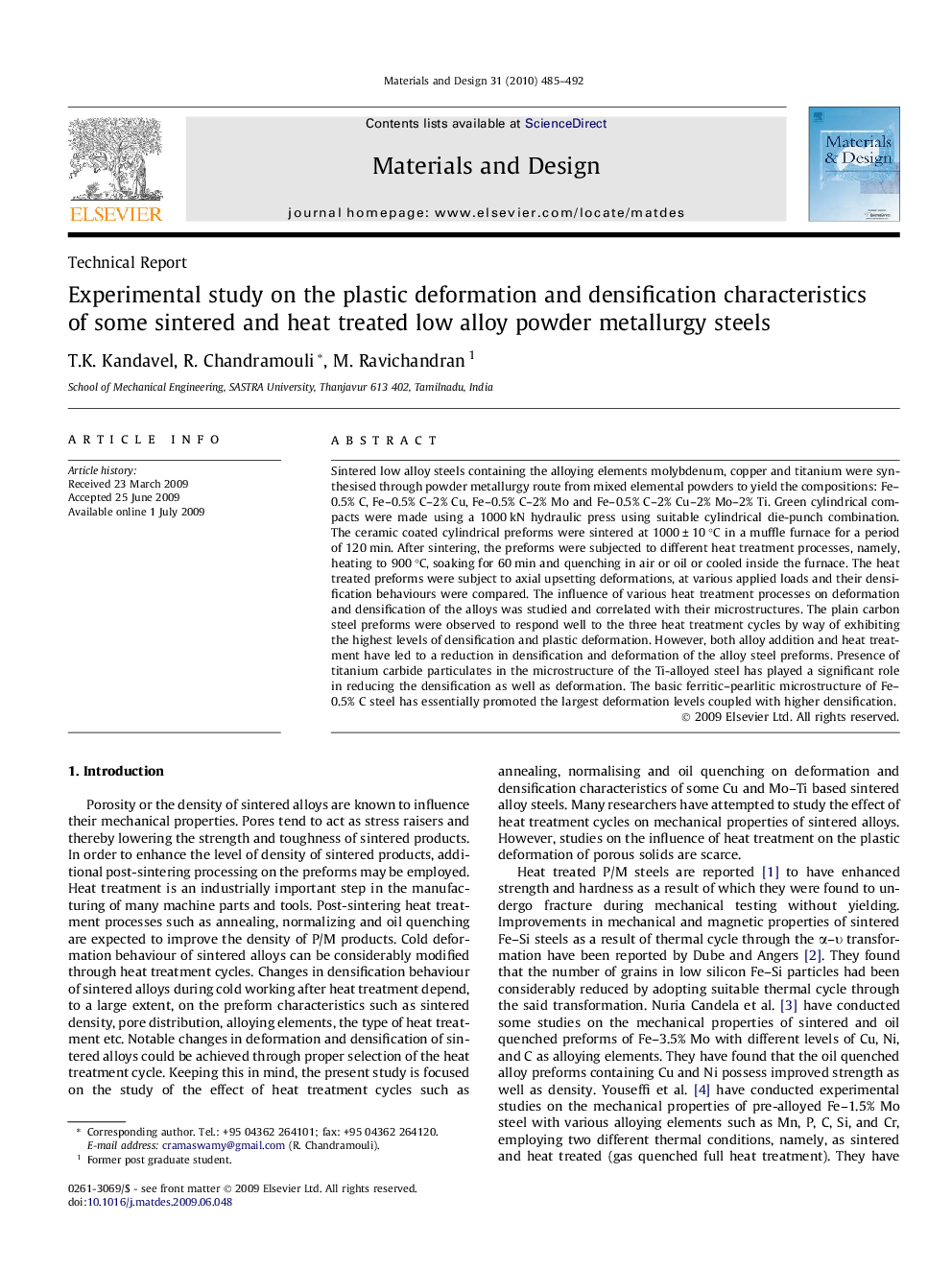| Article ID | Journal | Published Year | Pages | File Type |
|---|---|---|---|---|
| 832320 | Materials & Design (1980-2015) | 2010 | 8 Pages |
Sintered low alloy steels containing the alloying elements molybdenum, copper and titanium were synthesised through powder metallurgy route from mixed elemental powders to yield the compositions: Fe–0.5% C, Fe–0.5% C–2% Cu, Fe–0.5% C–2% Mo and Fe–0.5% C–2% Cu–2% Mo–2% Ti. Green cylindrical compacts were made using a 1000 kN hydraulic press using suitable cylindrical die-punch combination. The ceramic coated cylindrical preforms were sintered at 1000 ± 10 °C in a muffle furnace for a period of 120 min. After sintering, the preforms were subjected to different heat treatment processes, namely, heating to 900 °C, soaking for 60 min and quenching in air or oil or cooled inside the furnace. The heat treated preforms were subject to axial upsetting deformations, at various applied loads and their densification behaviours were compared. The influence of various heat treatment processes on deformation and densification of the alloys was studied and correlated with their microstructures. The plain carbon steel preforms were observed to respond well to the three heat treatment cycles by way of exhibiting the highest levels of densification and plastic deformation. However, both alloy addition and heat treatment have led to a reduction in densification and deformation of the alloy steel preforms. Presence of titanium carbide particulates in the microstructure of the Ti-alloyed steel has played a significant role in reducing the densification as well as deformation. The basic ferritic–pearlitic microstructure of Fe–0.5% C steel has essentially promoted the largest deformation levels coupled with higher densification.
